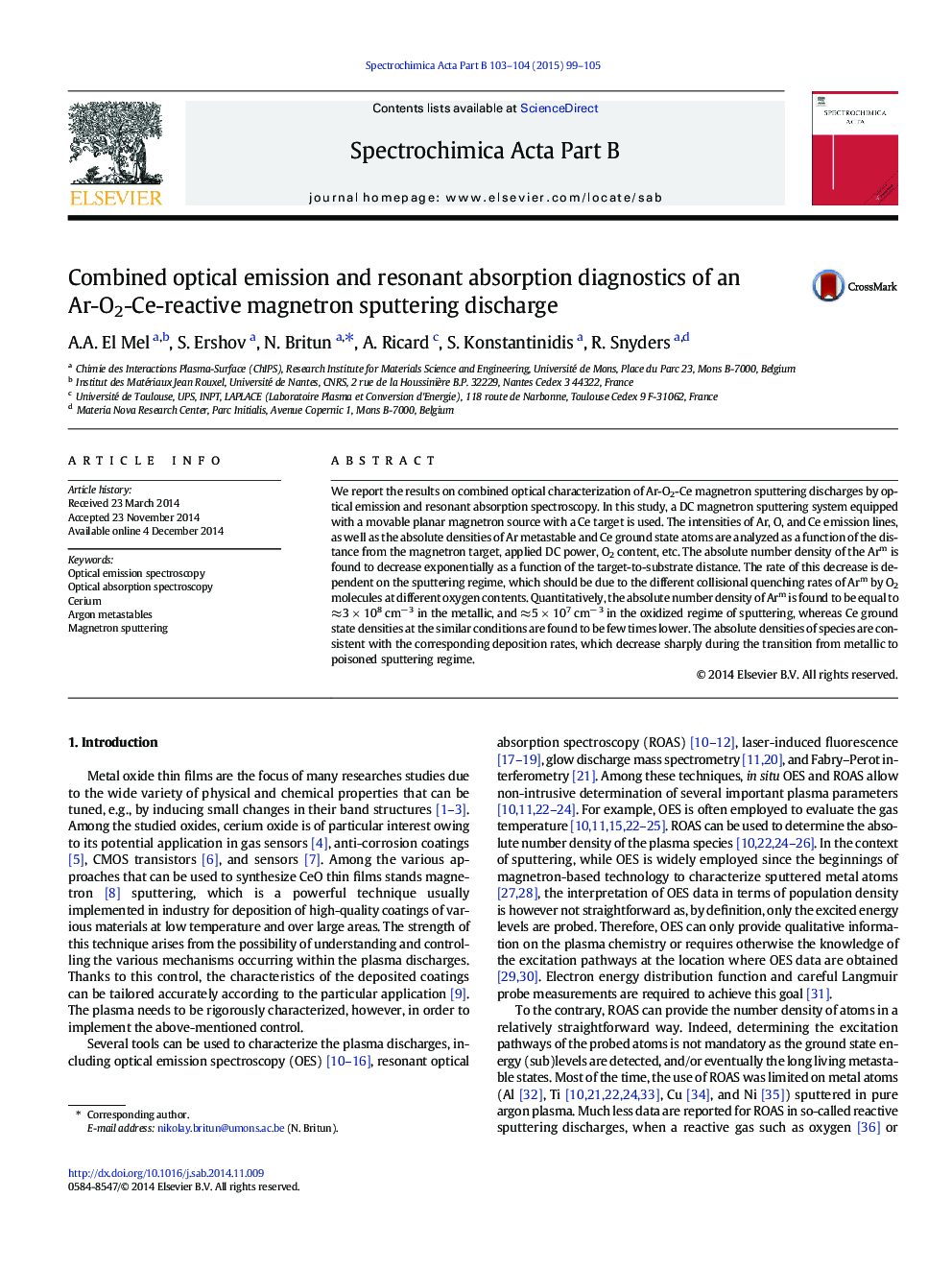| Article ID | Journal | Published Year | Pages | File Type |
|---|---|---|---|---|
| 1240137 | Spectrochimica Acta Part B: Atomic Spectroscopy | 2015 | 7 Pages |
•Optical emission and resonant absorption spectroscopy are employed to study Ar-O2-Ce magnetron sputtering discharges.•The density of argon metastables is found to decrease exponentially when increasing the target-to-substrate distance.•The collision-quenching rates of Arm by O2 molecules at different oxygen contents is demonstrated.•The deposition rates of cerium and cerium oxide thin films decrease sharply during the transition from the metallic to the poisoned sputtering regime.
We report the results on combined optical characterization of Ar-O2-Ce magnetron sputtering discharges by optical emission and resonant absorption spectroscopy. In this study, a DC magnetron sputtering system equipped with a movable planar magnetron source with a Ce target is used. The intensities of Ar, O, and Ce emission lines, as well as the absolute densities of Ar metastable and Ce ground state atoms are analyzed as a function of the distance from the magnetron target, applied DC power, O2 content, etc. The absolute number density of the Arm is found to decrease exponentially as a function of the target-to-substrate distance. The rate of this decrease is dependent on the sputtering regime, which should be due to the different collisional quenching rates of Arm by O2 molecules at different oxygen contents. Quantitatively, the absolute number density of Arm is found to be equal to ≈ 3 × 108 cm− 3 in the metallic, and ≈ 5 × 107 cm− 3 in the oxidized regime of sputtering, whereas Ce ground state densities at the similar conditions are found to be few times lower. The absolute densities of species are consistent with the corresponding deposition rates, which decrease sharply during the transition from metallic to poisoned sputtering regime.
